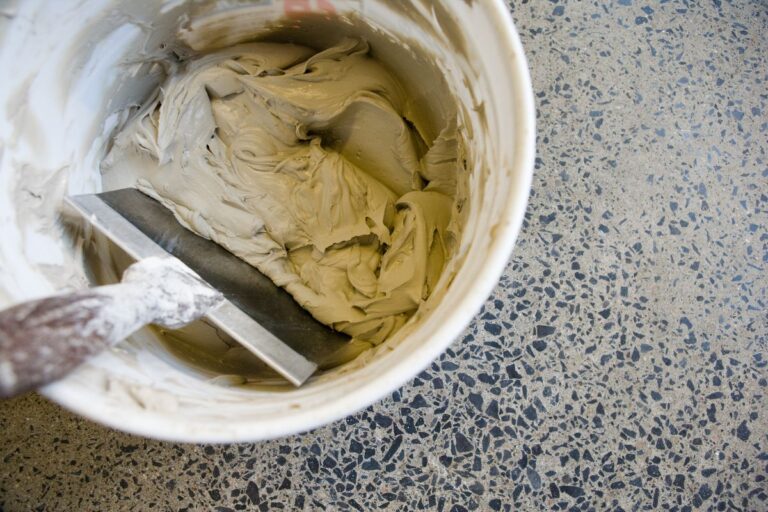Why does Glue Get Hot? Here’s Why You Should Know
You may have experienced it firsthand – the warmth that seeps through your fingers as you apply glue and it begins to dry. But why does this happen? What lies behind this seemingly simple act of bonding?
In this article, we will shed light on why glue gets hot, revealing the fascinating science beneath its adhesive properties.
The Science Behind Glue’s Heat Generation

When superglue bonds materials together, it can generate heat due to an exothermic reaction.
This reaction occurs when the glue reacts with the surface it’s applied to, causing a release of energy in the form of heat. The heat generated during the curing process helps to accelerate the bonding of the materials, allowing for a faster and stronger bond.
This innovative aspect of super glue’s heat generation is crucial for those seeking efficient and reliable adhesive solutions.
The exothermic reaction begins when the superglue comes into contact with moisture or water vapor in the air. As the glue cures, it undergoes a chemical transformation, releasing heat in the process.
This heat not only aids in the bonding process but also ensures a secure and durable connection between the materials being joined.
By harnessing the power of this exothermic reaction, super glue offers a quick and effective solution for various bonding needs.
Understanding the science behind superglue’s heat generation is essential for achieving optimal results.
Recognizing how the glue reacts with the surface and generates heat during curing, individuals can make informed decisions when selecting and applying the adhesive.
This knowledge empowers innovators to explore new possibilities and create innovative solutions that rely on the heat-generating properties of superglue.
Factors Contributing to Glue Getting Hot
Glue gets hot due to the exothermic reaction that occurs when it bonds with the surface it’s applied to.
This heat generation is a result of the chemical reaction between the glue and the material to which it is bonded.
When you apply super glue, which is a type of cyanoacrylate adhesive, it starts to dry and bond as soon as it comes into contact with air. This activation process is triggered by the moisture or water vapor present in the air.
As the glue solidifies and forms a bond, it releases heat energy. This heat is a byproduct of the chemical reaction taking place between the glue and the surface, and it’s what causes the glue to feel hot to the touch.
Understanding the factors contributing to glue getting hot is crucial for innovative applications of adhesives. By knowing how the bonding process generates heat, you can optimize its use in various industries and projects.
It’s important to consider the materials you’re bonding, as heating super glue isn’t recommended for materials like silk, polystyrene, and certain plastics, which can melt or be damaged.
By being mindful of the heat resistance of different materials and the exothermic reaction of the glue, you can ensure successful and efficient bonding while avoiding any potential damage.
Understanding the Exothermic Reaction of Glue
To understand the exothermic reaction of glue, it’s important to recognize the heat generated during the bonding process.
When glue is applied to a surface, it undergoes a chemical reaction called polymerization.
This reaction involves the joining together of the molecules in the glue, creating a strong bond. During polymerization, energy is released in the form of heat, causing the glue to get hot.
The heat generated during the exothermic reaction of glue is a result of the breaking and forming of chemical bonds.
As the glue molecules link together to form a solid bond, the energy released can cause the temperature to rise. This heat can be beneficial in certain applications, as it helps to accelerate the curing process and ensure a strong bond.
However, it’s essential to exercise caution when working with glue, as the heat generated during the exothermic reaction can potentially cause burns.
It’s important to follow safety guidelines, such as wearing protective gloves and working in a well-ventilated area, to minimize the risk of injury.
Understanding the exothermic reaction of glue allows for innovative applications and the development of new bonding techniques.
By harnessing the heat generated during the bonding process, researchers and engineers can explore ways to optimize the strength and efficiency of glue bonds, leading to advancements in various industries, from manufacturing to construction.
Effects of Glue’s Heat on Different Surfaces
Understanding the exothermic reaction of glue provides insight into how the heat generated during bonding can affect various surfaces.
When glue heats up, it can have different effects depending on the material it comes into contact with.
For heat-resistant surfaces like metals, wood, rubber, and paper, the heat from the glue is generally not a cause for concern. These materials can withstand the temperature increase without any significant damage.
However, it’s important to exercise caution when using glue on sensitive materials such as silk or heat-sensitive plastics.
The heat generated by the glue can cause these materials to melt or deform, resulting in irreversible damage.
To ensure successful bonding, it’s crucial to consider the heat resistance of the surface before applying glue.
What happens when glue gets hot?
When exposed to heat, glue undergoes a chemical reaction that can affect its bonding properties and potentially damage certain materials.
The heat causes the molecules in the glue to move faster, increasing their energy and enabling them to bond more effectively with the surfaces to which they’re applied.
This enhanced bonding capability can be beneficial in some cases, as it allows for a stronger and more durable bond.
However, it’s important to note that not all materials can withstand the heat generated by glue. Heat-sensitive materials like silk, polystyrene, and certain plastics can melt or warp when exposed to high temperatures, leading to damage or failure of the bond.
Therefore, it’s crucial to consider the heat resistance of the bonded materials and use caution when applying heat to glue.
By understanding the effects of heat on glue and the materials it’s used on, you can ensure successful bonding while avoiding any potential damage or complications.
Conclusion
In conclusion, the heat generated by glue as it dries is a fascinating result of chemical reactions.
Understanding the science behind this phenomenon can help us appreciate the adhesive properties of glue even more.
Remember, ‘where there’s heat, there’s a bond.’
So next time you use glue and feel it getting hot, know that it’s a sign of the strong connection being formed between surfaces.



